by Louise Irvine
As Halloween approaches, we are exploring the legend of Medusa, the monstrous gorgon with a head of writhing snakes. She inspired a Wedgwood neo-classical plaque at WMODA as well as a scary mask by Helen Nottage. But why is she the Versace logo?
In ancient Greek mythology, Medusa is the most famous of the hideous Gorgon sisters and the only one to be born a mortal. Later, in Ovid’s Metamorphoses, she was described as a ravishingly beautiful maiden, “the jealous aspiration of many suitors”. Poseidon, the sea god, ravaged her in Athena’s temple and the jealous goddess of wisdom cursed Medusa by transforming her hair into serpents and caused anyone who gazed at her terrible beauty to turn to stone.
Virgil, the ancient Roman poet, described her as “an enormous monster about whom snaky locks twist their hissing mouths; her eyes stare malevolently, and under the base of her chin the tail-ends of serpents have tied knots.”
Medusa was killed by Perseus, son of Zeus, who was assisted by the gods. He received a reflective bronze shield from Athena, a Cap of Invisibility from Hades, winged sandals from Hermes, and a sword from Hephaestus. With these divine gifts he was able to decapitate Medusa while she slept. Immediately after she was beheaded, the winged horse Pegasus sprung from her neck. Each drop of her blood transformed into venomous serpents when it dripped on the plains of Libya.
The transformative powers of Medusa’s severed head assisted the hero Perseus in his subsequent adventures. He turned the Titan Atlas into a mountain and rescued the princess Andromeda from Cetus, the sea monster. The tale of Perseus and Andromeda unfolds on a monumental Doulton Lambeth Faience vase and Medusa’s head can be seen on the hero’s shield. The vase, which was painted by John Eyre, was exhibited at the Chicago World’s Fair in 1893 and is now in Arthur Wiener’s private collection.
When Perseus had completed his heroic tasks with Medusa’s head, he gave it to Athena, who wore it on her goatskin shield going into battle. Consequently, Medusa’s image was used as a protective amulet on armor in ancient Greece and Rome. In fact, the name Medusa is derived from a Greek verb meaning to guard or protect. The power to avert evil influences is why the image of Medusa was used on Roman mosaic floors as well as on Roman sarcophagi.
A Roman marble sculpture of Medusa inspired Wedgwood’s Jasper ware plaque at WMODA. The original bas-relief was attributed to John Flaxman in 1777 and was inspired by the antiquities collection of Sir William Hamilton (1730-1803), a British diplomat in Naples. Over the years, the Medusa plaque has been produced in blue, green, grey, and black Jasper ware as well as on pendants. Masks of Medusa can be seen also at the base of the handles on Wedgwood’s Pegasus vase.
The Versace logo was inspired by Medusa’s image in a Roman ruin in Reggio Calabria that the Versace siblings played in as children. Apparently, Gianni Versace chose the femme fatale as his company’s logo because she provokes passion and he hoped his designs would have the same effect on customers. As an art student in Edinburgh, I created a Halloween costume with a snake head-dress inspired by Medusa. It is just as well that I cannot find any photos – the image would be much too scary!
Read more about Pegasus
Heavenly Horses
Read more about Helen Nottage’s work
The Human Condition- The Art of Helen Nottage
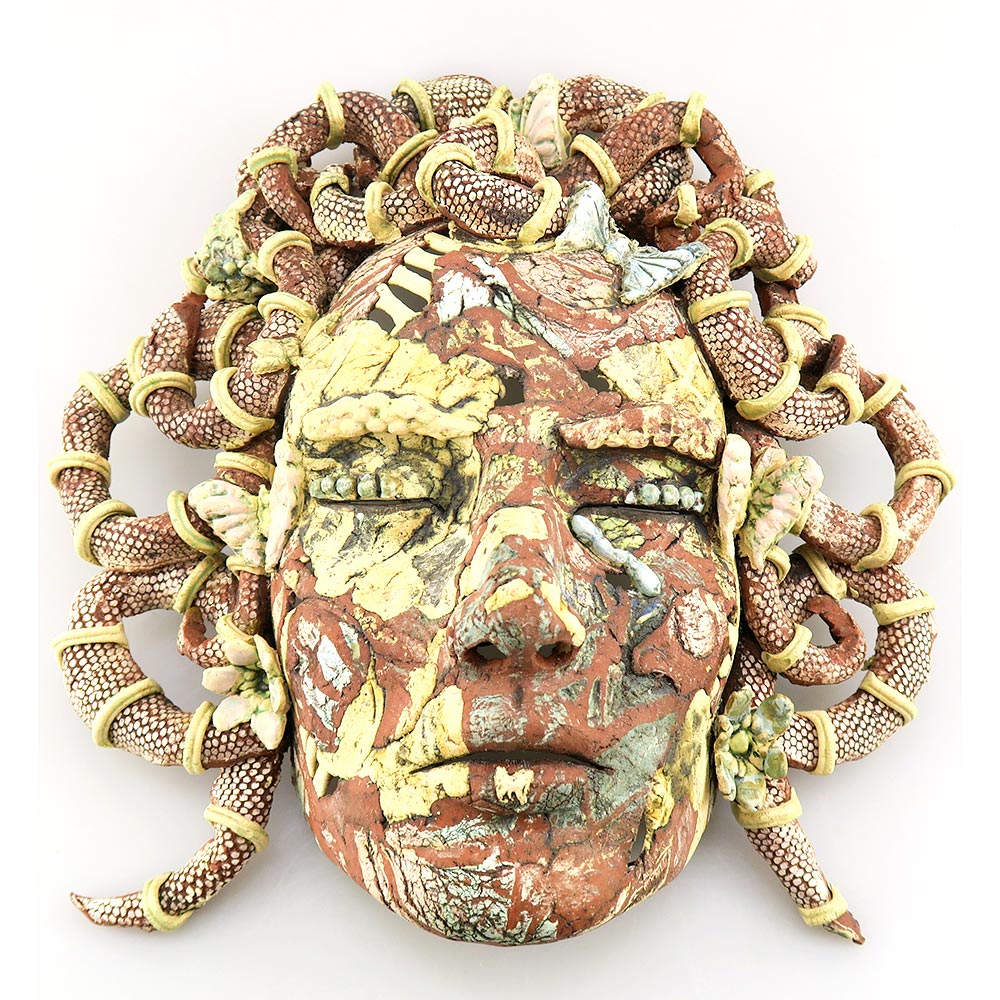
Medusa Mask by H. Nottage
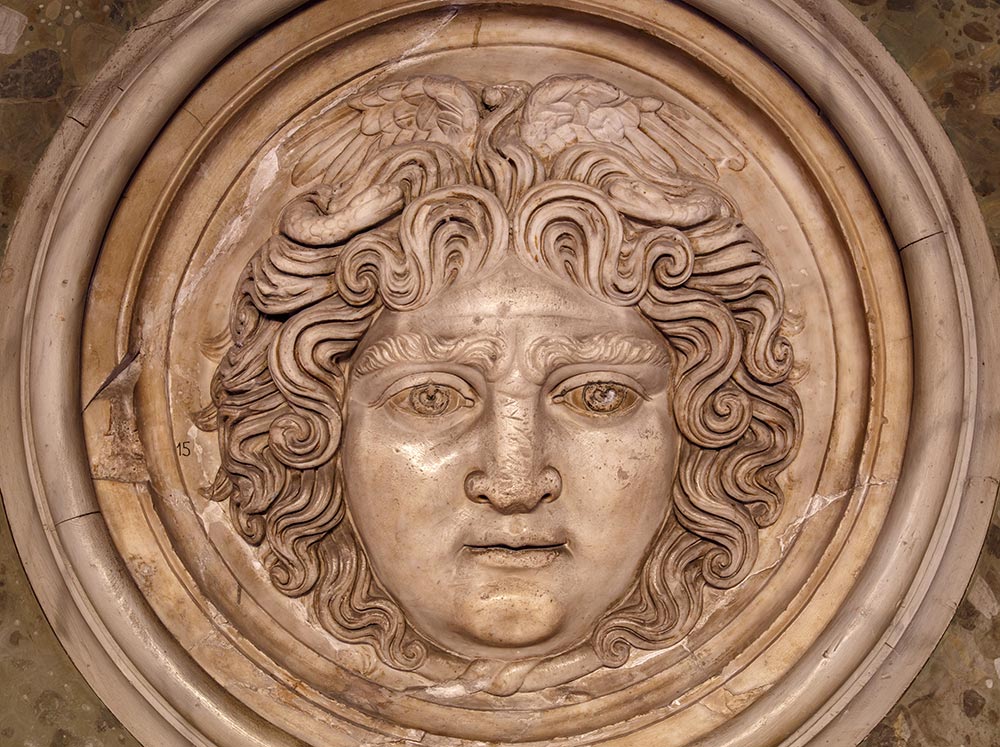
Roman Medusa
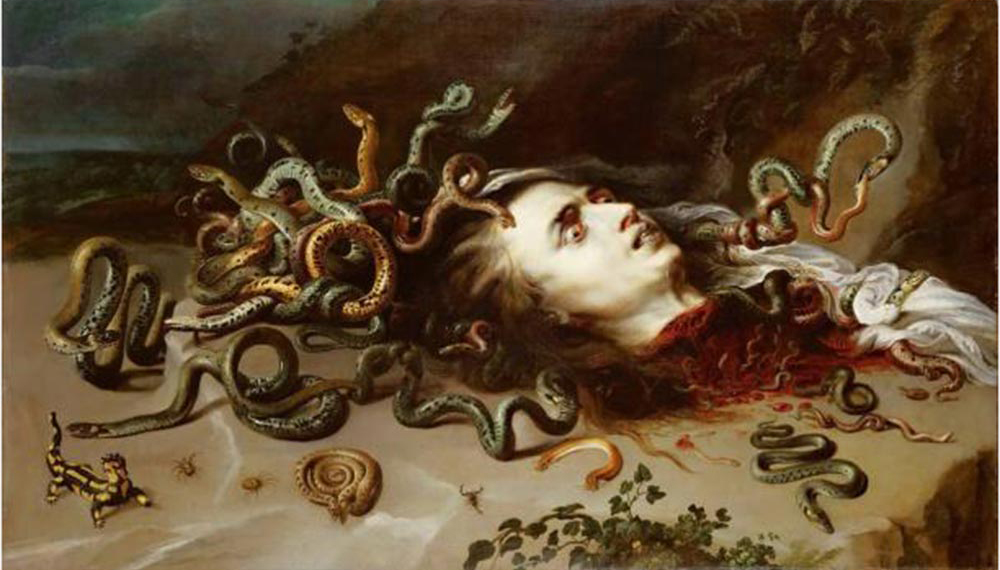
Medusa by P. P. Rubens
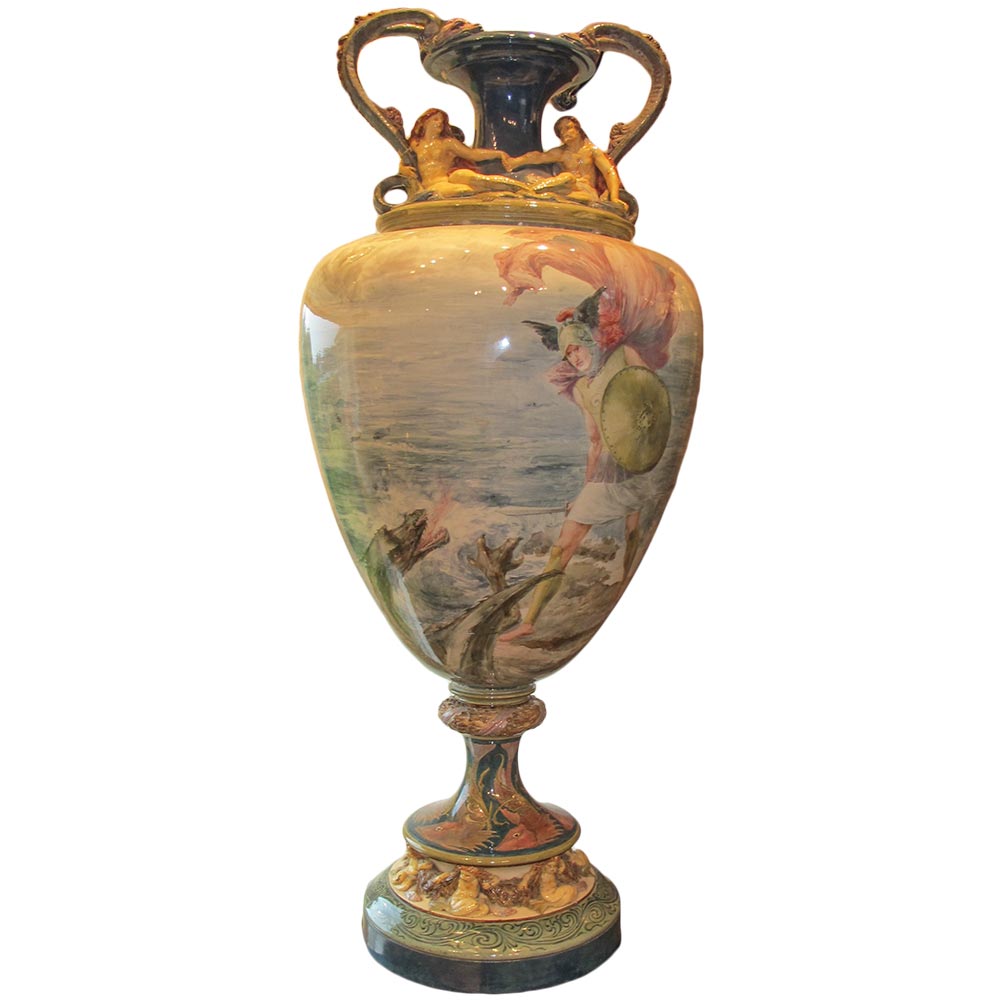
Doulton Lambeth Faience Perseus & Andromeda Vase by J. Eyre
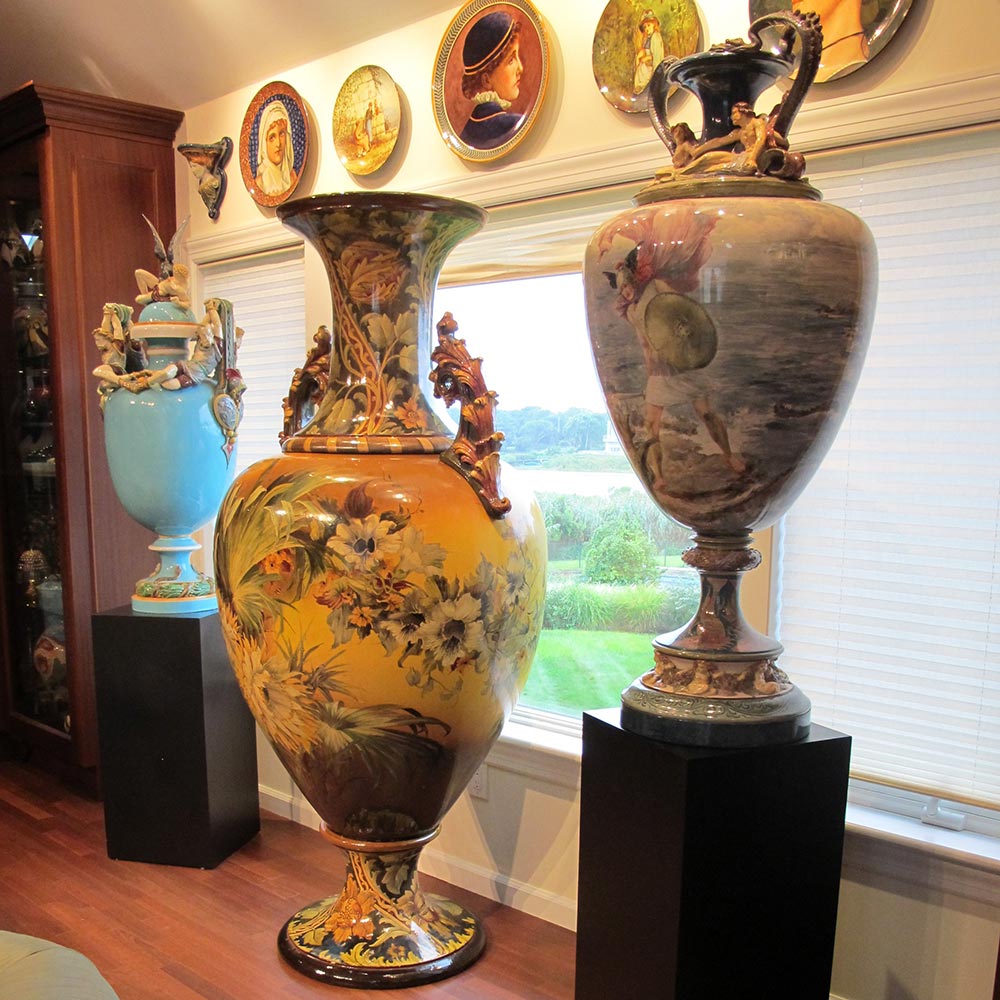
Doulton Lambeth Faience Perseus & Andromeda Vase by J. Eyre
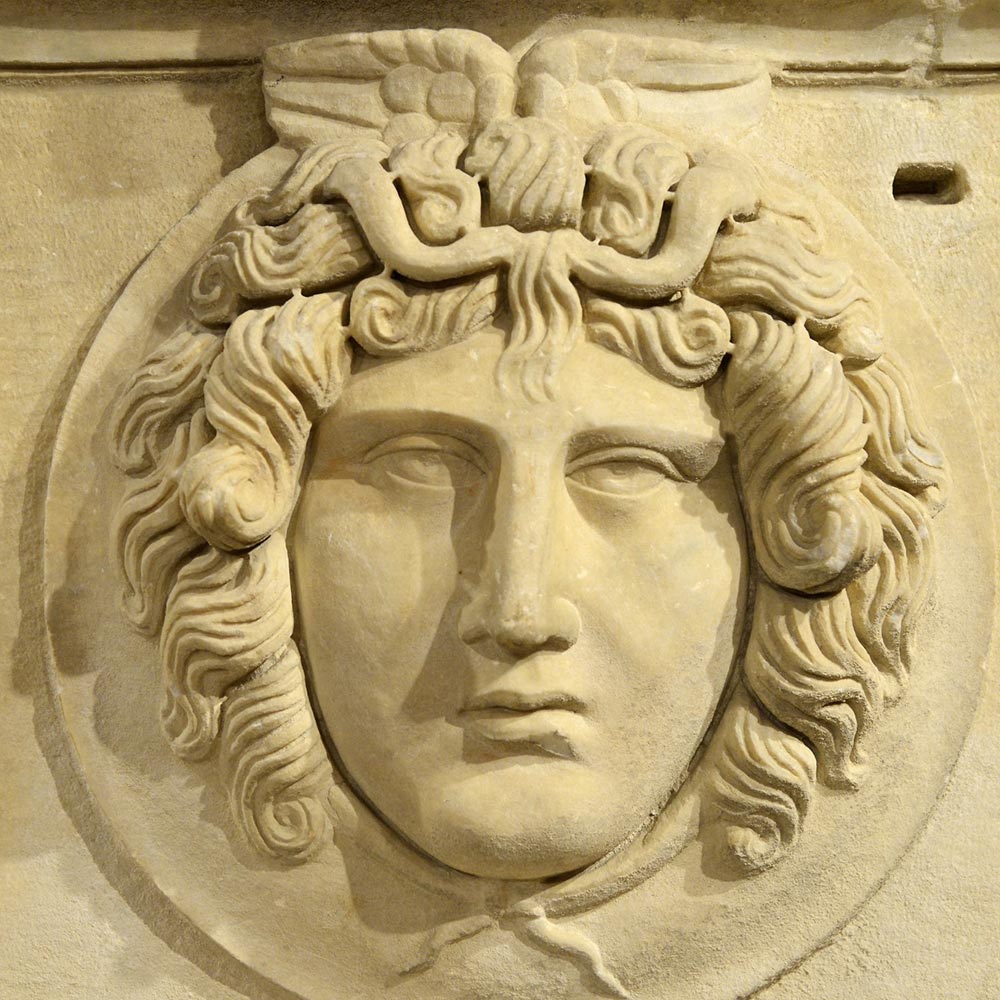
Roman Medusa
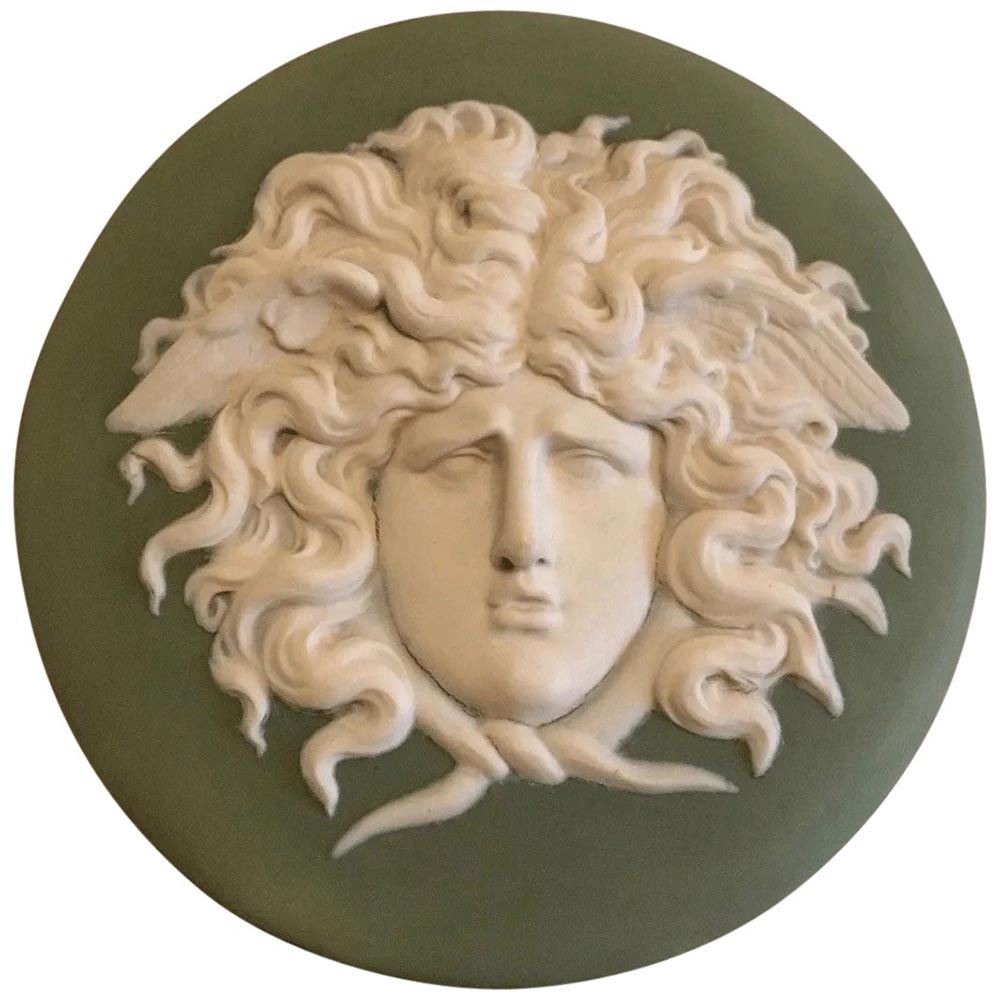
Wedgwood Medusa Plaque by J. Flaxman
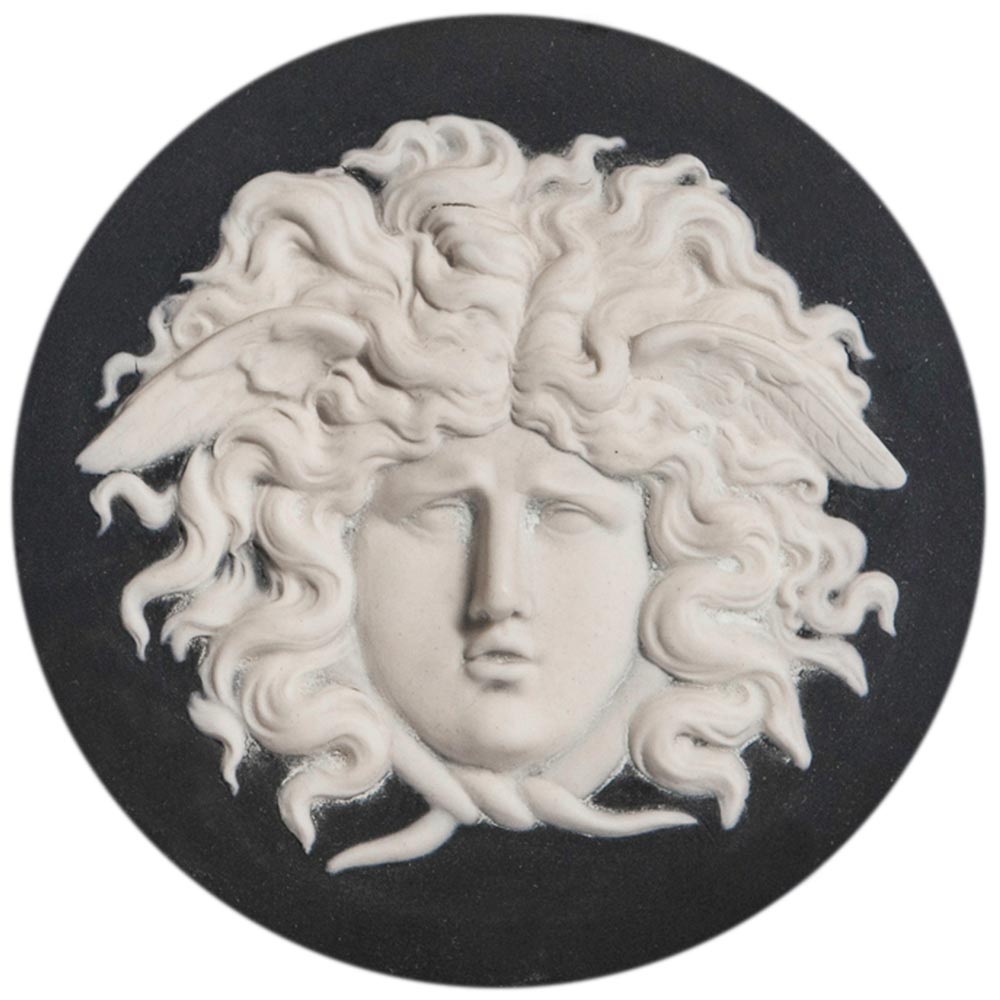
Wedgwood Medusa Plaque by J. Flaxman
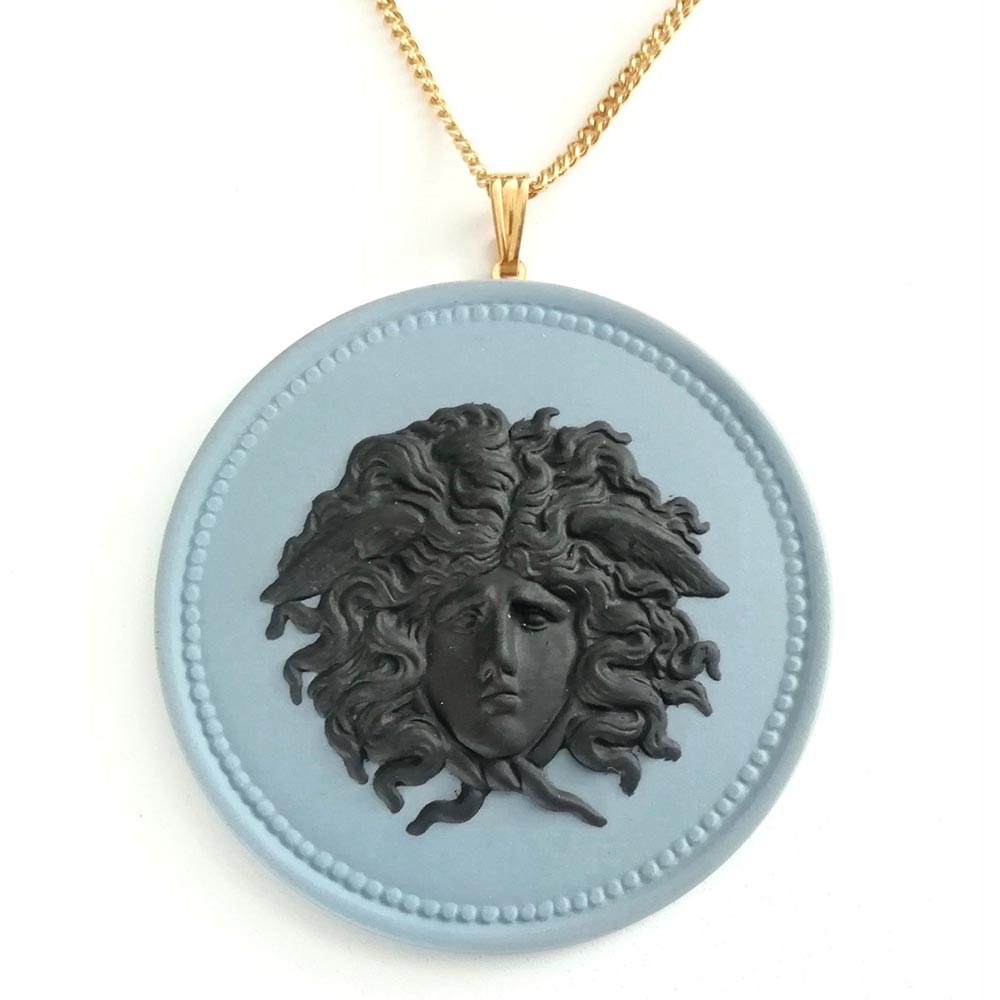
Wedgwood Medusa Pendant by J. Flaxman
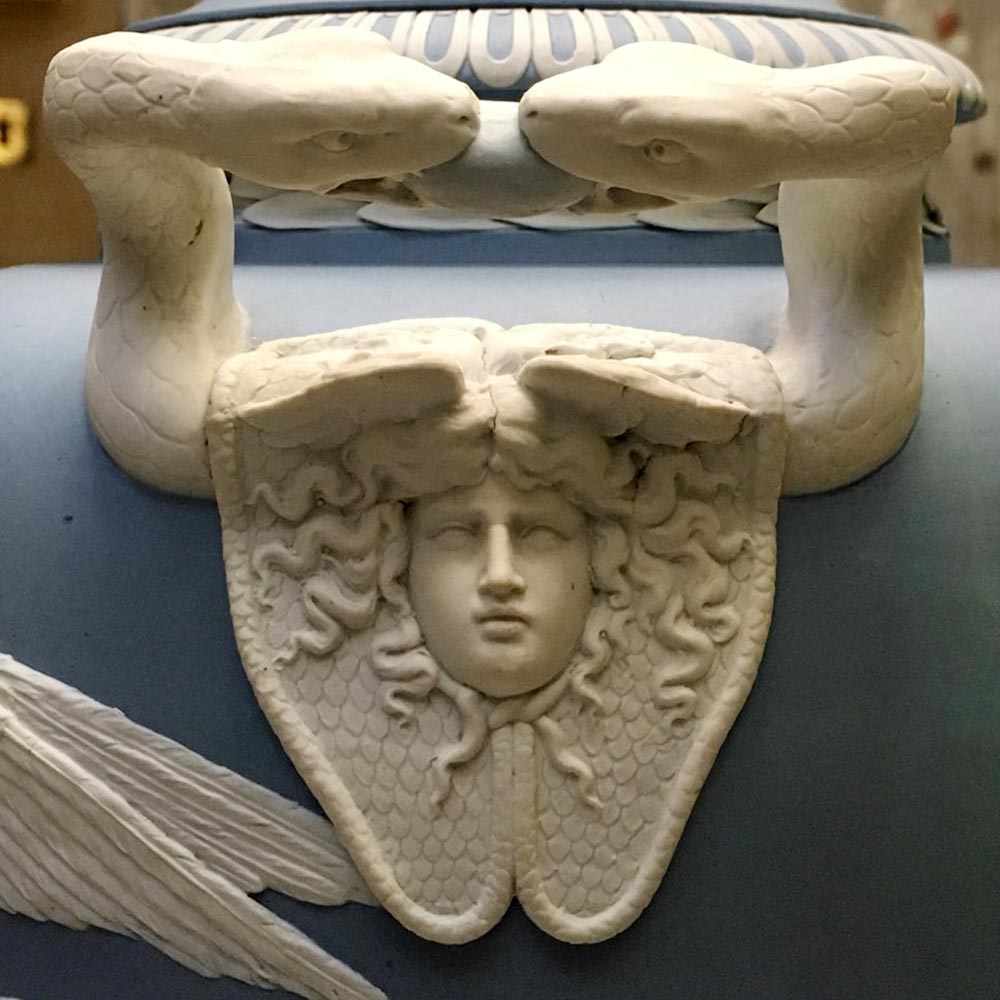
Wedgwood Medusa Handles on the Pegusus Vase
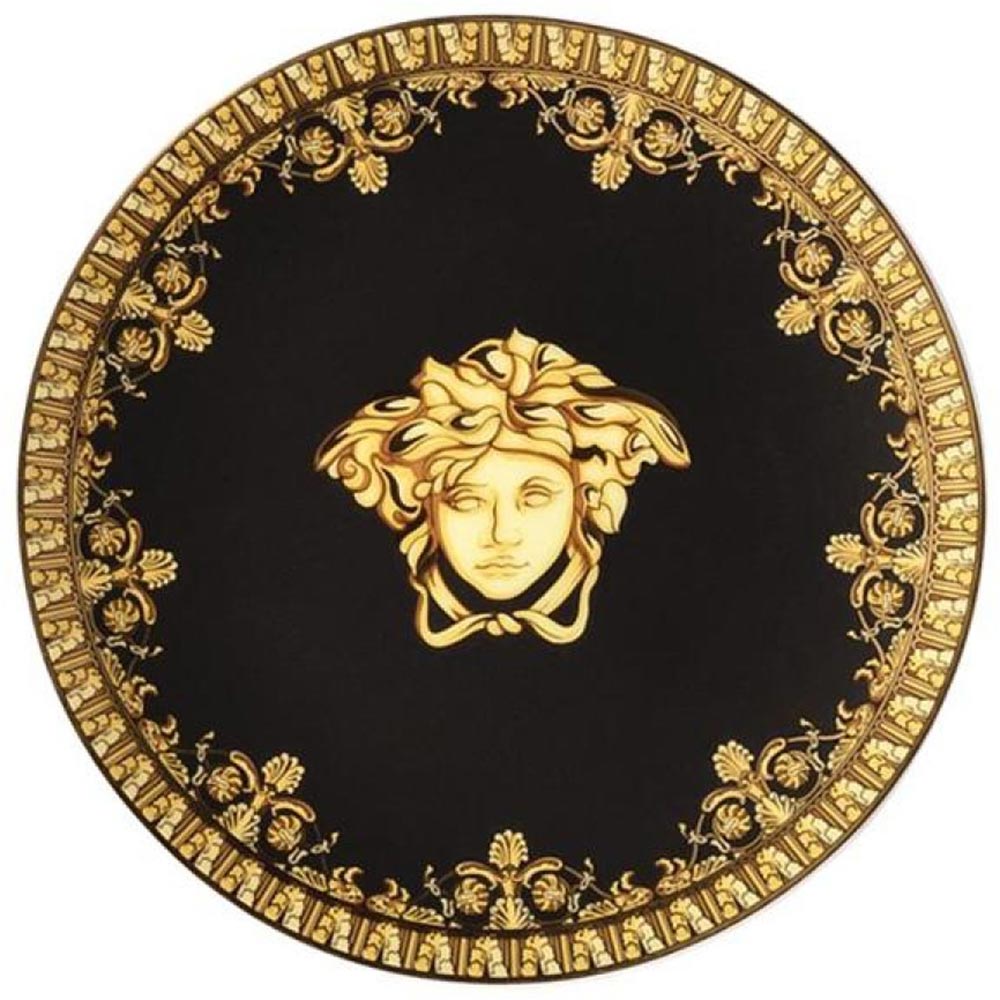
Versace Logo
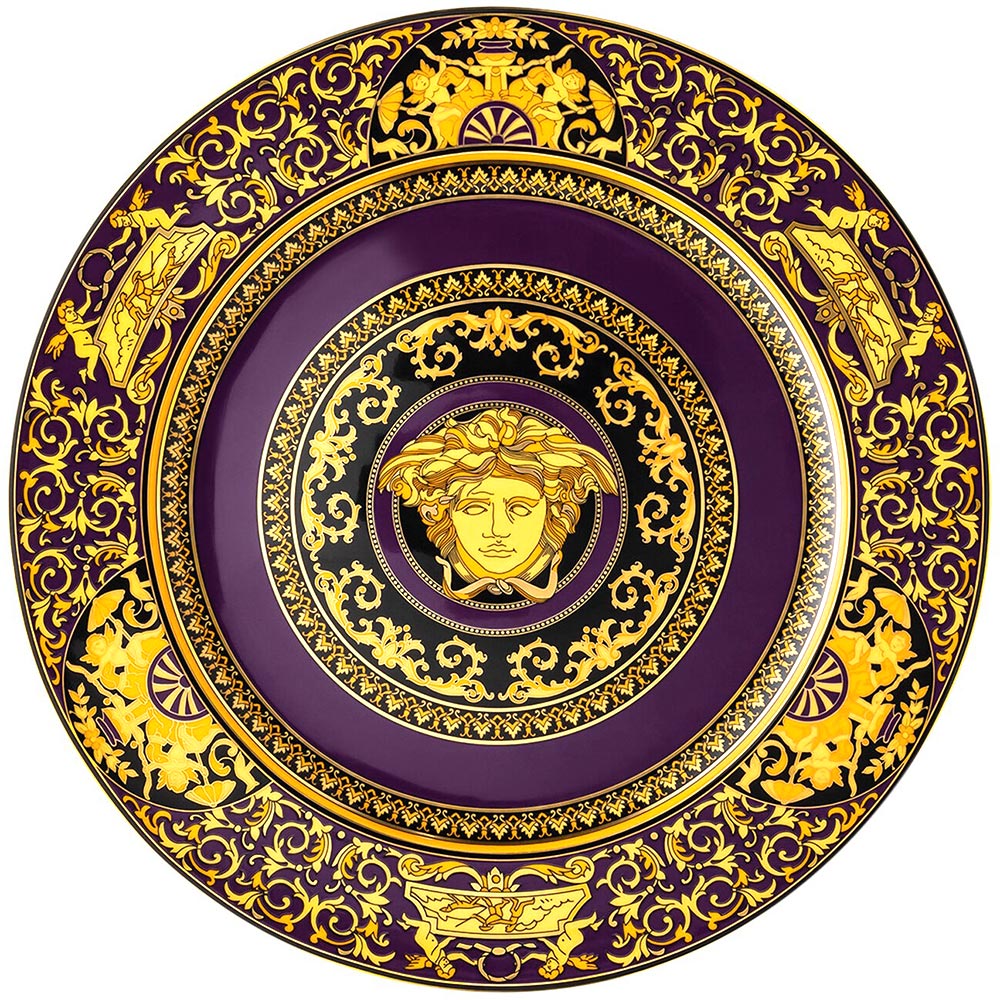
Versace Service Plate

Roman Medusa
